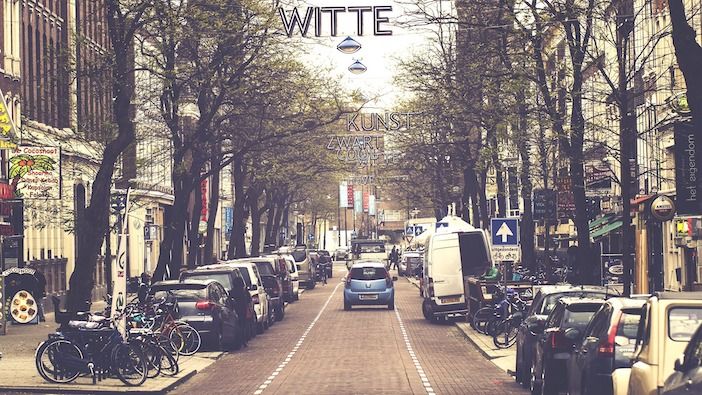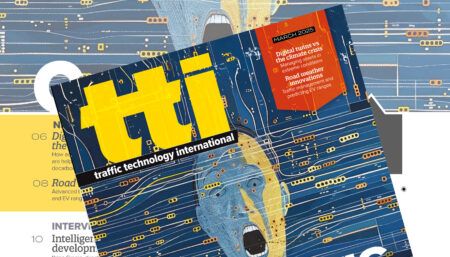It has been announced that the new Urban Data Access Platform (UDAP) in the Netherlands is now fully operational, with all existing intelligent traffic light controllers (iTLCs) now linked to the platform – creating a world-first national network of traffic management.
All road authorities and certified service providers in the Netherlands can now use the numerous data services of the new national data platform, which was developed as a data exchange point in the Talking Traffic chain on behalf of the nation’s Ministry of Infrastructure and Water Management. It is enabled by the TLEX I2V software platform data link, provided by smart mobility specialist Monotch.
In the coming years, the number of iTLCs connected will increase further and other objects will also be connected to UDAP, such as bollards, sensors, and measuring systems for tire pressure and height clearance. Thanks to the ultra-fast data exchange via UDAP, intelligent infrastructure can make an important contribution to traffic flow, road safety, and sustainability in the Netherlands.
Operational benefits
The deployment of ITS systems and data exchange via UDAP provides many benefits for both road authorities and road users, but also for parties such as service providers and knowledge and research institutes.
Data on the platform can be used in services such as informing road users about the time-to-green at signals; prioritizing certain road users at intersections, such as emergency services, freight, public transport, and cyclist; and for information services to optimize traffic flows.
As initiator and client for the development of UDAP, the Ministry of Infrastructure and Water Management anticipates a more efficient flow of traffic and further development of information services for road users. In addition to the data exchange, useful functions have been added to UDAP such as quality control, quality monitoring, a link to other objects besides iTLCs and a function to define the policy rules for vehicle priority.
“In the coming year we will not only gain more insight into the data exchange with intelligent objects and the impact on traffic flow but also, for example, for applications for road safety and sustainability,” says Vincent Habers, senior advisor ITS and responsible for the implementation of UDAP on behalf of the Talking Traffic partnership.
“UDAP receives data from various roadside systems, regardless of the supplier, and automatically sends this data to the road authorities,” says Menno Malta, founder and CEO of Monotch, who provide the UDAP with a millisecond-reliable data link exchange of iTLC data and vehicle travel data, via the TLEX I2V software platorm. “UDAP also receives anonymised travel and vehicle-related data from road users and we monitor the quality, security, and privacy of the data exchange. The status of all data is made transparent in dashboards.

“As of March 1, 2021 road authorities will proactively receive notifications and advice for follow-up when the connection to the linked objects is lost. For questions about UDAP reports and protocols, road authorities can contact a special helpdesk that is also supported by the traffic managers of MAP traffic management (MAPtm).”
MAPtm, an operational traffic management specialist, assisted Monotch in setting up the quality controls of the data. Together with Monotch, they also formulated the performance indicators for all intersections in the Netherlands. These performance indicators are continuously monitored via UDAP and revised every six months. Where necessary, MAPtm also provides road authorities with traffic engineering support for the information, priority, and Optimising services via UDAP. MAPtm’s Nuno Rodrigues, states that the more iTLC and vehicle data are used, the more impact we will notice on the road networks.
Direct added value for road authorities
During the information sessions, road authorities, service providers, and suppliers of roadside systems had the opportunity to already get acquainted with the data services and linking options of UDAP. They are enthusiastic about the possibilities, as UDAP now offers them extensive monitoring and reporting functionalities with information about the status and data flows of the connected roadside systems. Road authorities are especially happy that everything is organised on a single platform.

According to Jaco van Veldhuijsen, smart mobility project manager at the Province of Utrecht who also participated in the test before the delivery of UDAP, the convenience of having everything in one place and with a direct view of all connected objects and data flows is a gigantic step forward for road authorities. “In this way, we keep an eye on and keep control over the traffic flows in the region and we immediately receive notifications in the dashboard when something goes wrong in the data exchange. Based on the advice received following the report, you can then find out where the data flow is stuck. It is also possible to adjust the priority regulation ourselves and in the event of calamities and road works we can also intervene in the system and pause the connection for example.”





